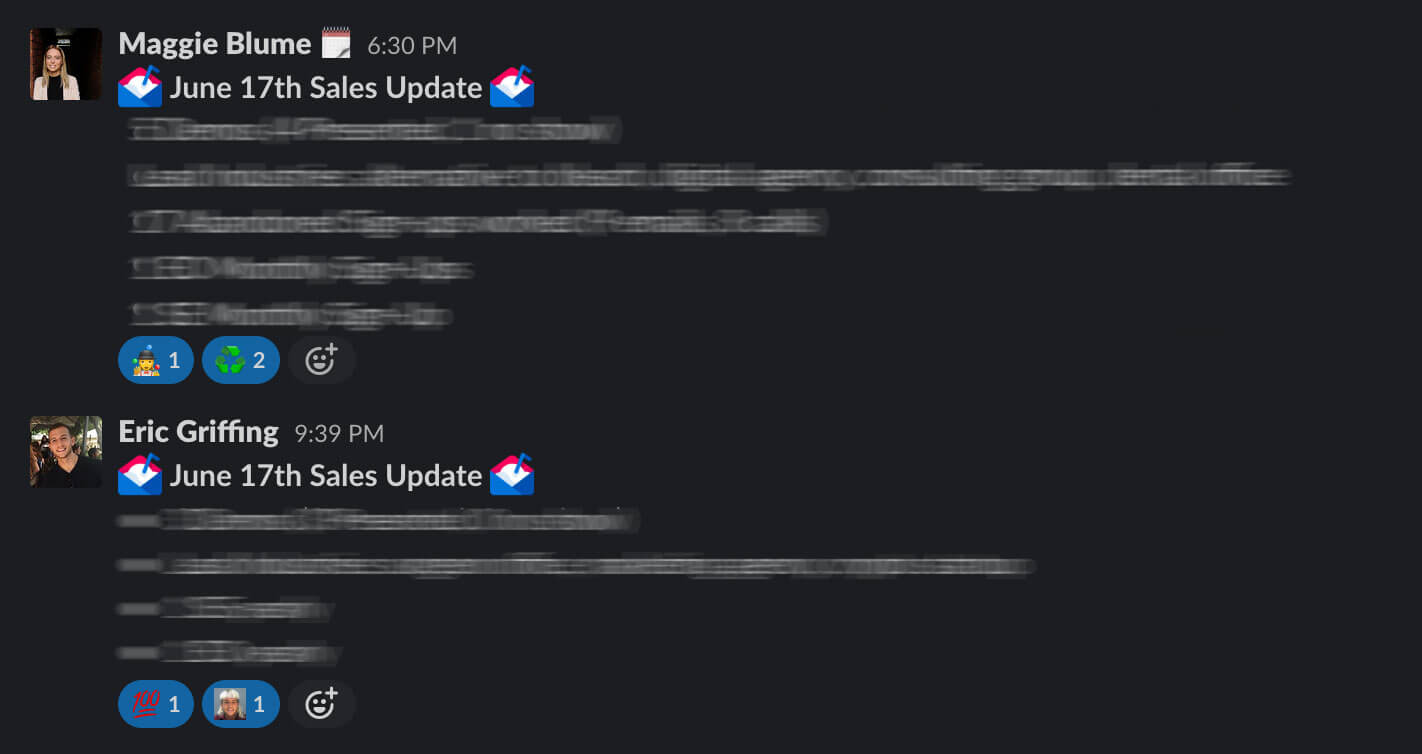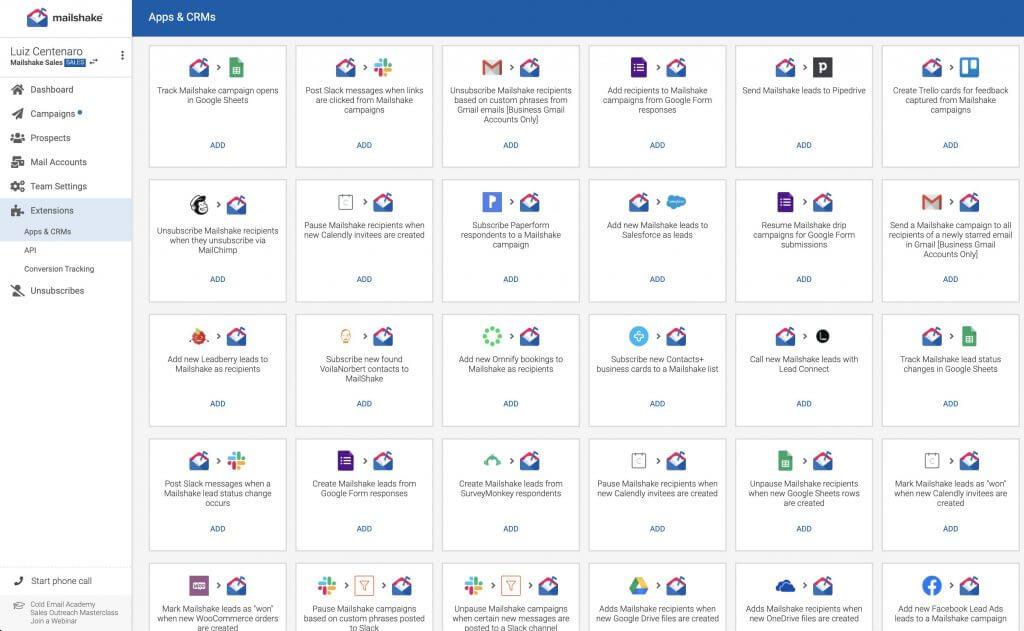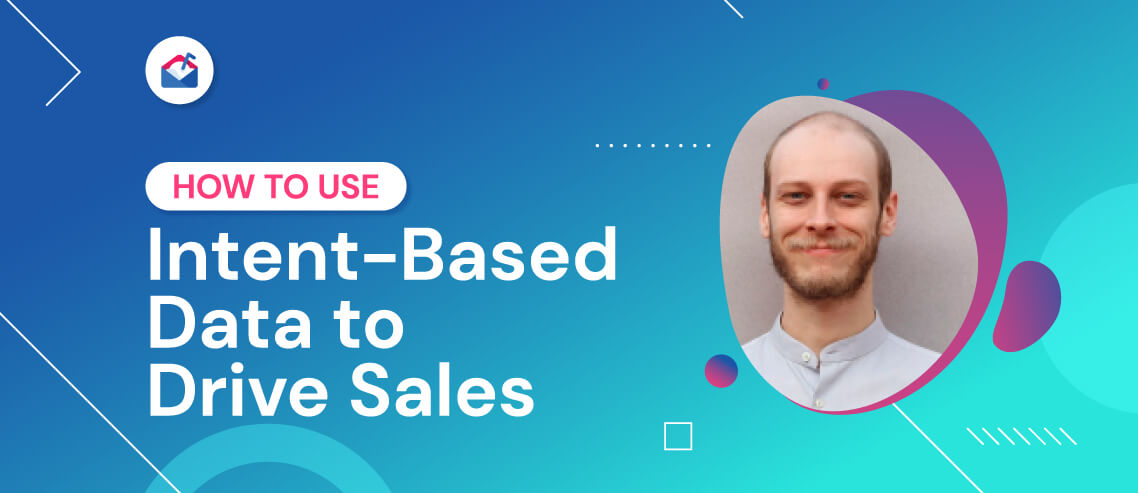7 Tips on Managing a Remote Inbound Sales Team You can Implement by Next Week
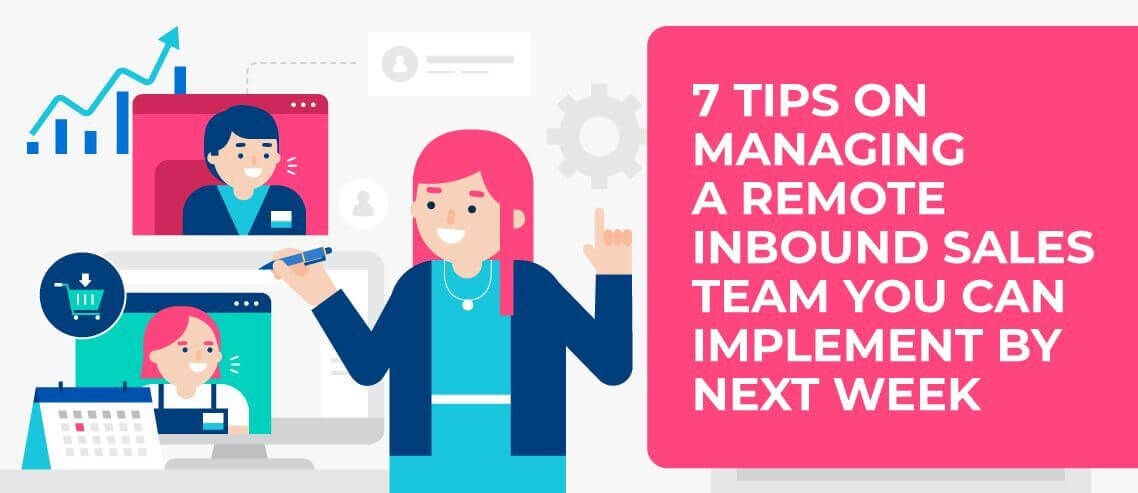
Contents
Imagine a fully-remote sales team exceeding quotas by 200% every month. No commute, no micromanagement, and no expensive office space. Sounds like a good deal, right?
At Mailshake, remote working has been a part of our culture since we were founded in 2015. Since day one, we’ve built our entire team around a “remote first” philosophy.
We’ve done everything remotely – hiring, onboarding, training and managing our inbound sales team. #WeWorkRemotely

Luiz Cent working remotely from Miami Florida.
If you’re a sales manager, here are some tips that will help you manage your remote sales team – perhaps this is a temporary situation until the pandemic subsides, or maybe you’ll end up making the change permanent.
We believe that remote working is the best scenario, and these are the insights we’ve gained along the way to develop and empower your remote sales team.
1. Develop a Pre/Post Demo Process & a SAAS Software Demo Script
At Mailshake, I had the opportunity to lead the first hundred or so inbound demos. I experimented with what worked best within those 30 minutes and eventually hired a sales coach from JBarrows Sales Training to help refine our process.
In the beginning, I was winging it and seeing great results, but I quickly learned that this method wouldn’t be scalable as we hired our remote sales force. I realized that we needed a process and a script.
I also learned that a script doesn’t necessarily need to be fully rehearsed, and that it doesn’t kill autonomy. Think of a script as a way to empower your reps. You can utilize a demo process and script to build confidence while helping your sales reps drive efficient conversation and avoid getting dragged down rabbit holes.
Our process and script at Mailshake has several elements. It all starts pre-demo with a multi-channel process to engage prospects before we even talk to them via Zoom.
Before we speak to a prospect on the phone, we send them an agenda that shows we care and that we have an idea of what we want to get done during the call. About half of the prospects respond, and a few will add things that they want to discuss during the call. (We love ♥️ this engagement, and it helps us prepare even more in the demo.)
a) Software Sales Demo Agenda Template:
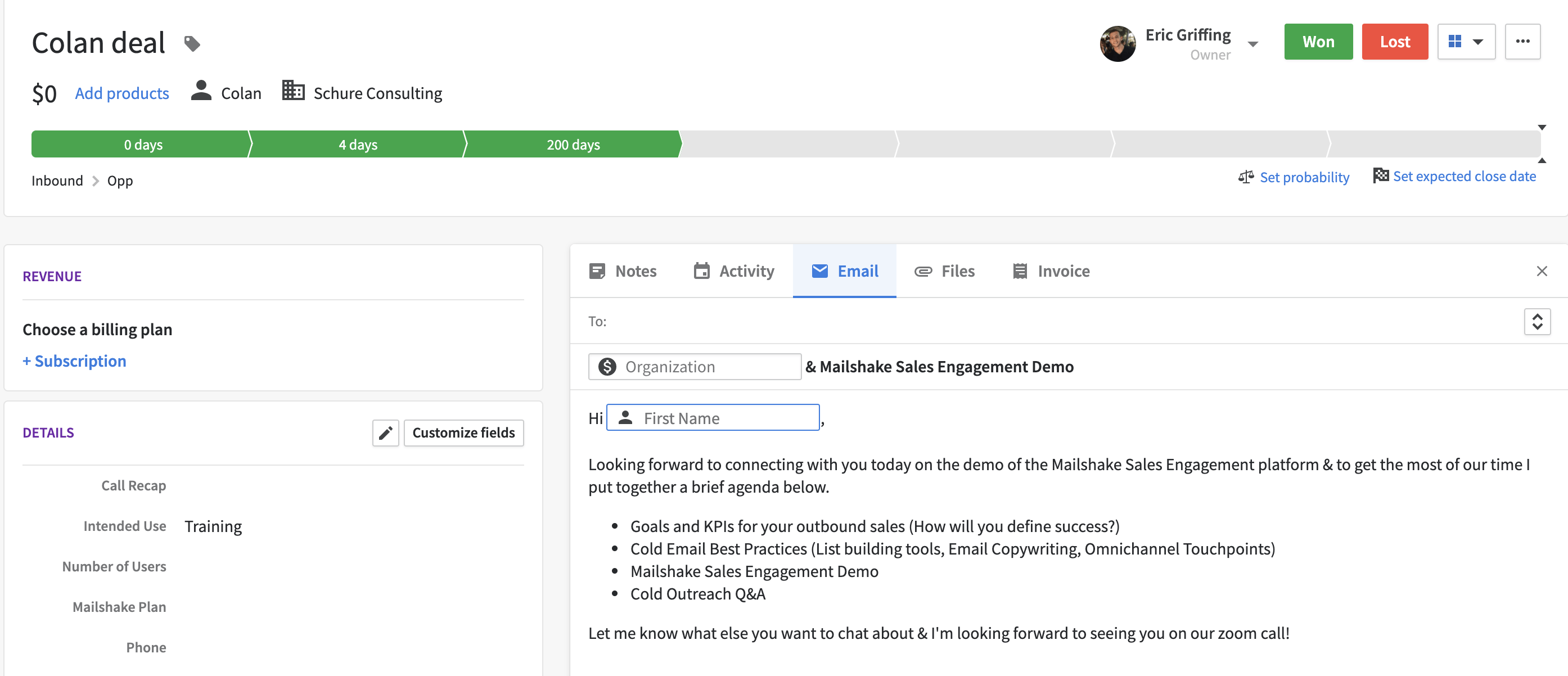
Software Sales Demo Agenda Template:
Hi {{First}},
Looking forward to connecting with you today on the demo of the Mailshake Sales Engagement platform! To get the most of our time I put together a brief agenda below.
- Goals and KPIs for your outbound sales (How will you define success?)
- Cold Email Best Practices (List building tools, Email Copywriting, Omnichannel Touchpoints)
- Mailshake Sales Engagement Demo
- Cold Outreach Q&A
b) We connect with them on LinkedIn:
We’ve discovered that sending a simple message on LinkedIn prior to our meeting helps connect a face to a name and significantly reduces our no show rate.

Example of a multi channel touch after we send our agenda, we connect with the prospect on LinkedIn.
c) If they don’t join our demo call, we send them another email from our Pipedrive templates.
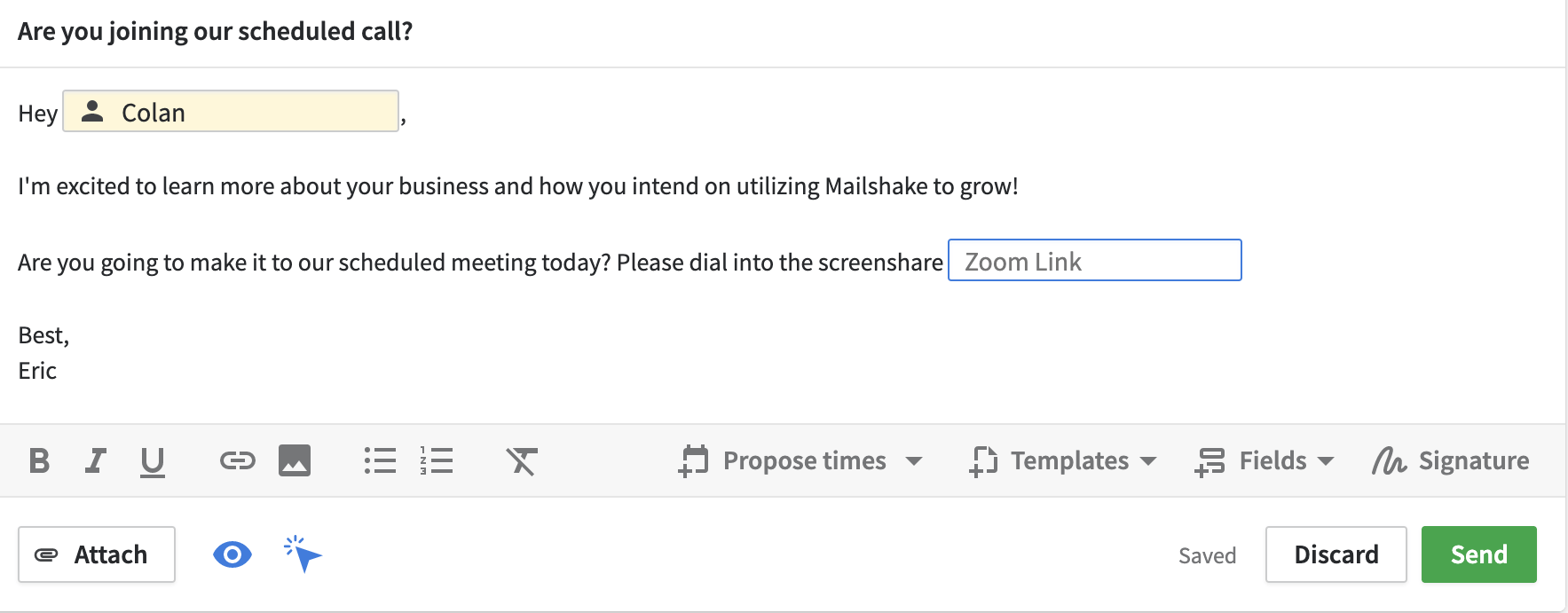
Hey {{First}},
I'm excited to learn more about your business and how you intend on utilizing Mailshake to grow!
Are you going to make it to our scheduled meeting today? Please dial into the screenshare.
Best,
{{Your name}}
d) If they still don’t join, we call them and revisit their LinkedIn page
e) If they “no show,” we add them to the Mailshake “No Show Nurture Campaign” automated with Pipedrive and Mailshake
By simply dragging the leads from our Pipedrive “Demo Scheduled” column to our “No Show” column, we trigger our Pipedrive integration with Mailshake to start nurturing the no shows with email campaigns.
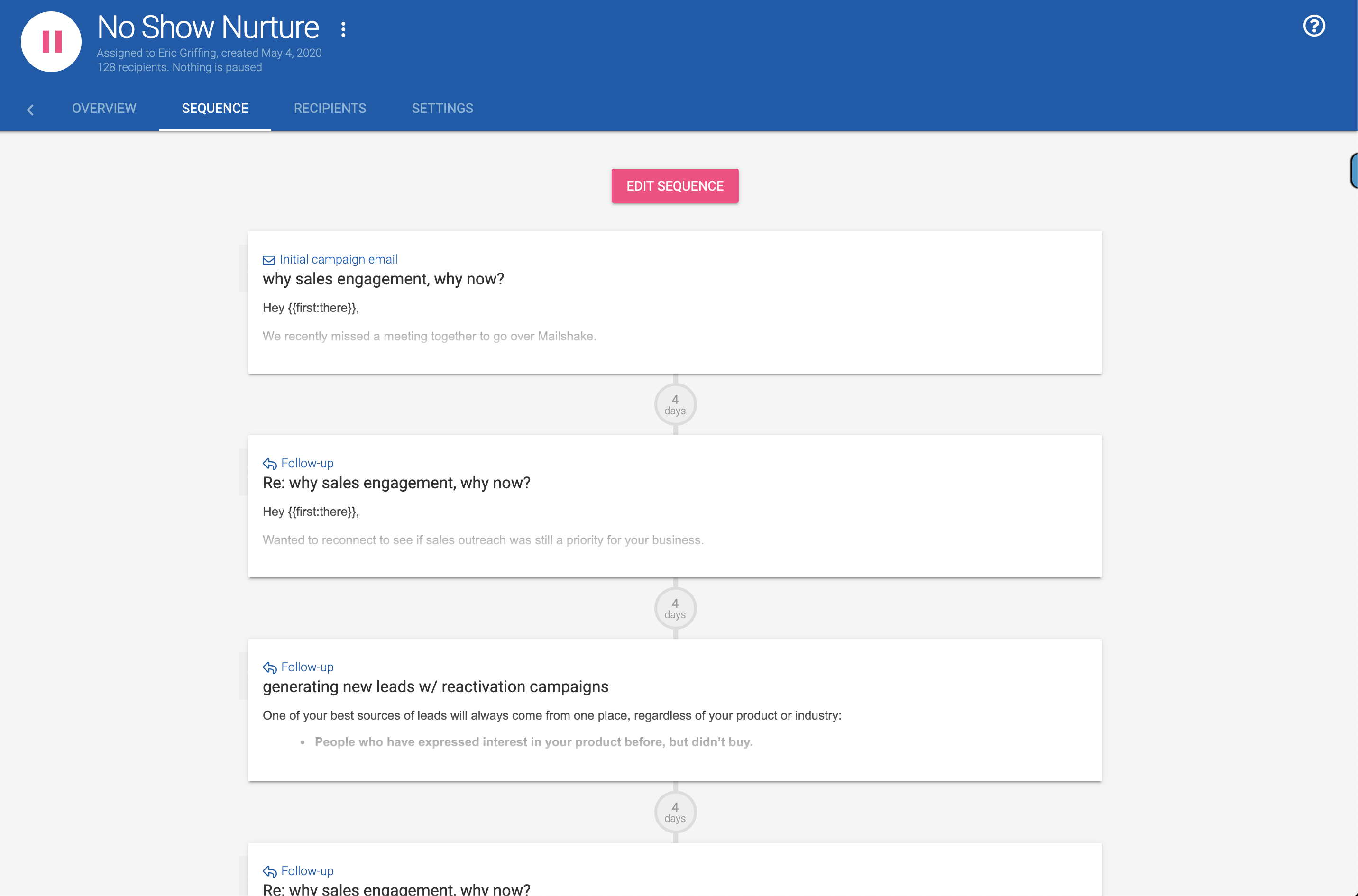
Here is a quick three minute video showing how we conduct that process:
So all of that was Pre Demo! Though it may sound like a lot, we get it done in minutes with our templates and automation. Each sales rep blocks 30 min a day in the morning to tackle these tasks.
Now for During the Demo:
One of the best things we did was to hire an experienced sales coach to help us with our demo process. If you ever have a chance to work with Morgan Ingram, we highly recommend it. During our sales demos, our reps have autonomy, but we have a few processes in place to help prevent ghosting post-demo and move the conversation along.
Our Opening Line:
“Why a sales engagement tool, and why now?”
At first, we were asking “What brought you to Mailshake today,” but this new question is a lot more specific and also adds the urgency factor. Why now?
Our Timing Question:
“Do you have 30 minutes blocked off for this call?”
We ask this to determine if the prospect has a hard stop. The term “hard stop” doesn’t translate well internationally, and this question about timing blocks helps prevent you from going over in your demos. If they say yes, perfect – so do you. If they say no, thank them for letting you know and assure them that you’ll keep the conversation brief.
Our Up-Front Contract:
“My goal is to show you how Mailshake can make a significant impact on your business. If you agree that it can make a significant impact, then I’ll show you how to get started. If not, no worries. We can part ways as friends, but I don’t want to bombard you with follow up emails if this isn’t for you.”
This is where you get the prospect to agree to something before the demo. The goal of the up-front contract is to prevent ghosting after the demo.
Here is a video on how to execute an upfront contract by Maggie Blume from our Sales Team.
Our Closing Question:
“Is this exactly what you’re looking for?”
This question is so gold. We often hear “yes, but…” and the but is the key. This is where the prospect finally starts telling you their hesitations.
So are you ready to take this pre-demo and demo process and make it your own? Ping me on LinkedIn if you have any questions!
2. Foster a Culture of Daily Updates and Keep a Pulse on Goals With a Scorecard
If you can’t measure it, you can’t improve it.” – Peter Drucker
For our inbound and outbound demos, we track everything.
We track Total Leads, total ICP leads, the numbers demos presented, the number of no shows, and the number of deals won. This is done on a daily basis. We share updates in Slack, and we keep track in a Google sheet as well.
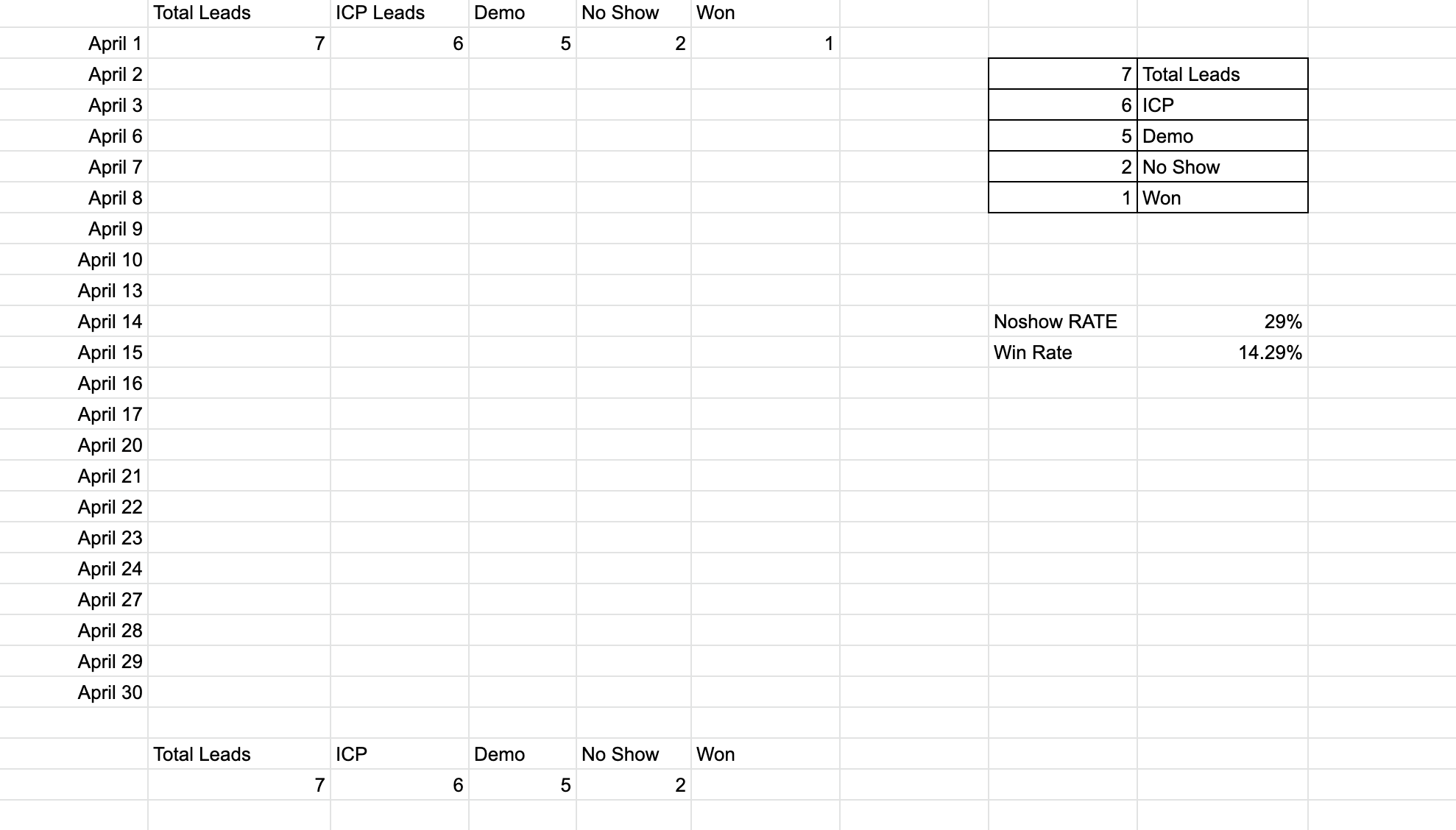
You can use our template here. (Make a copy of the google sheet)
Here are examples of our daily sales updates:
On a weekly cadence, we utilize scorecards to keep a pulse on how we’re meeting our monthly goals. Scorecards come from EOS (Entrepreneurs Operating System), and it’s helped get everyone aligned.
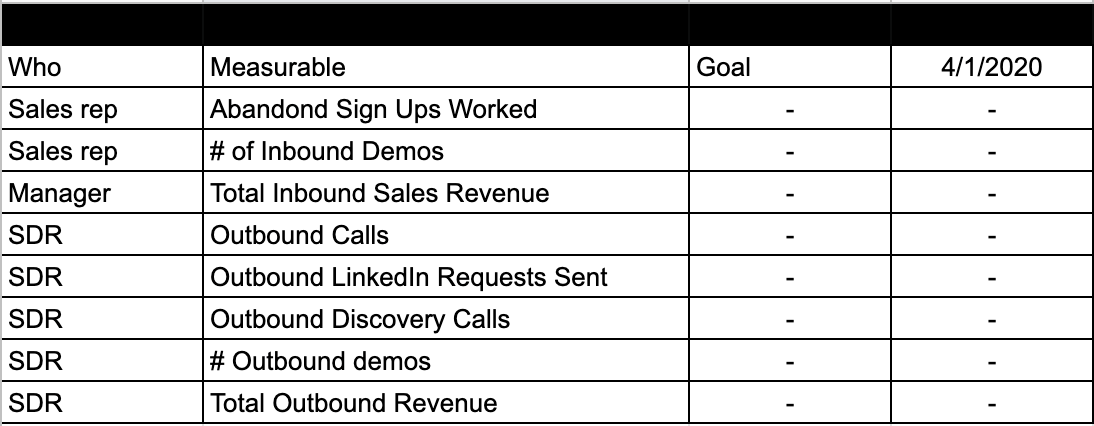
Here is an EOS scorecard template for you.
3. Help Automate Mundane Tasks
As managers, our job is to enable our teams. Ask your sales reps:
- “What is taking you the most time in your day?”
- “What processes are we doing that we can get rid of?”
- “How can we automate more and save you time so you can focus on the things that matter?”
When you get the answers to these questions, listen – even though the answer to some of them will be that you understand, followed by an explanation of why we do things a certain way.
But oftentimes, you’ll be able to save your reps time with some Zapier hacks. As a sales manager, Zapier will quickly become your best friend. Learn to use it and learn to use it well. We love Zapier at Mailshake & have been touted as one of the fastest growing apps on the Zapier ecosystem.
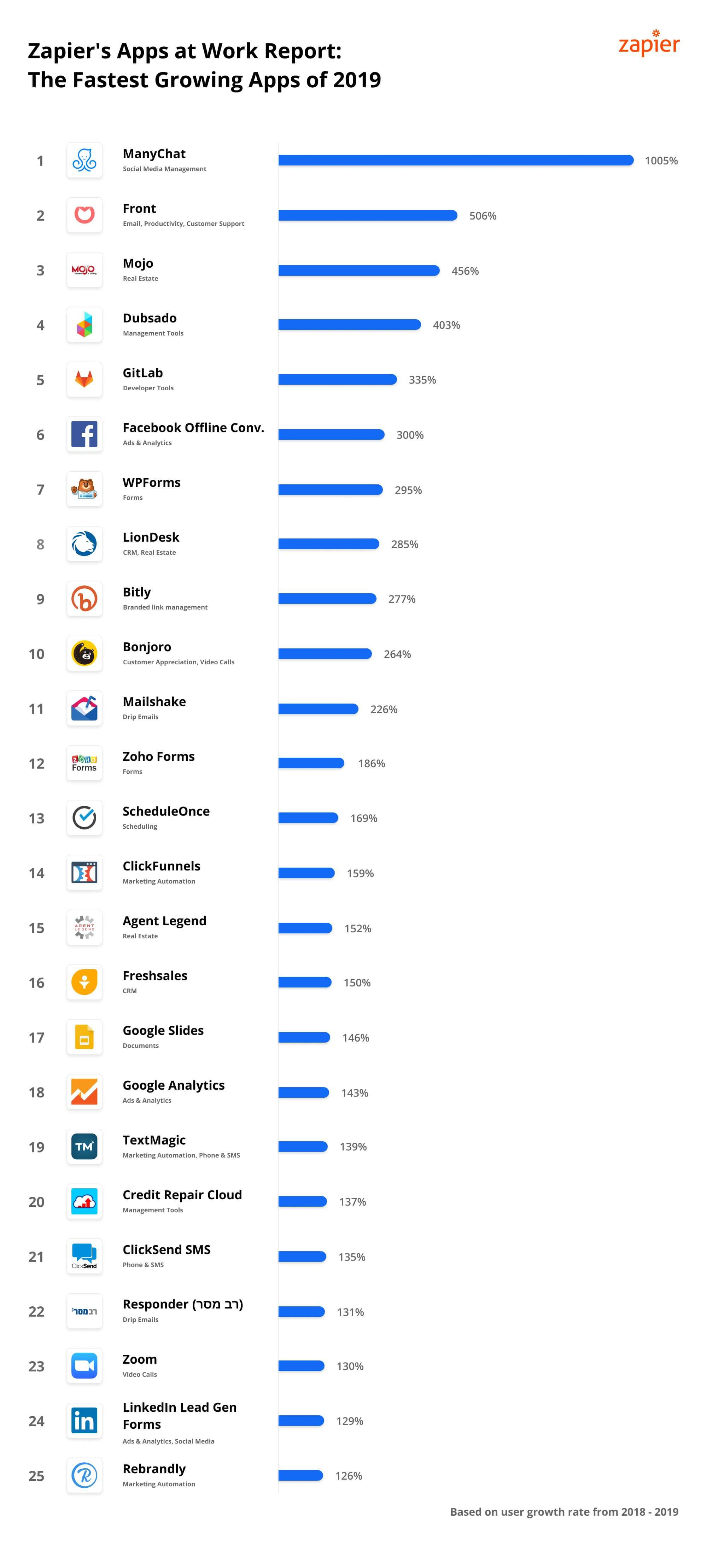
The best reps are empowered to find their own solutions, but your job as a manager is to make sure they aren’t distracted from their core competence of demos and following up with their pipeline.
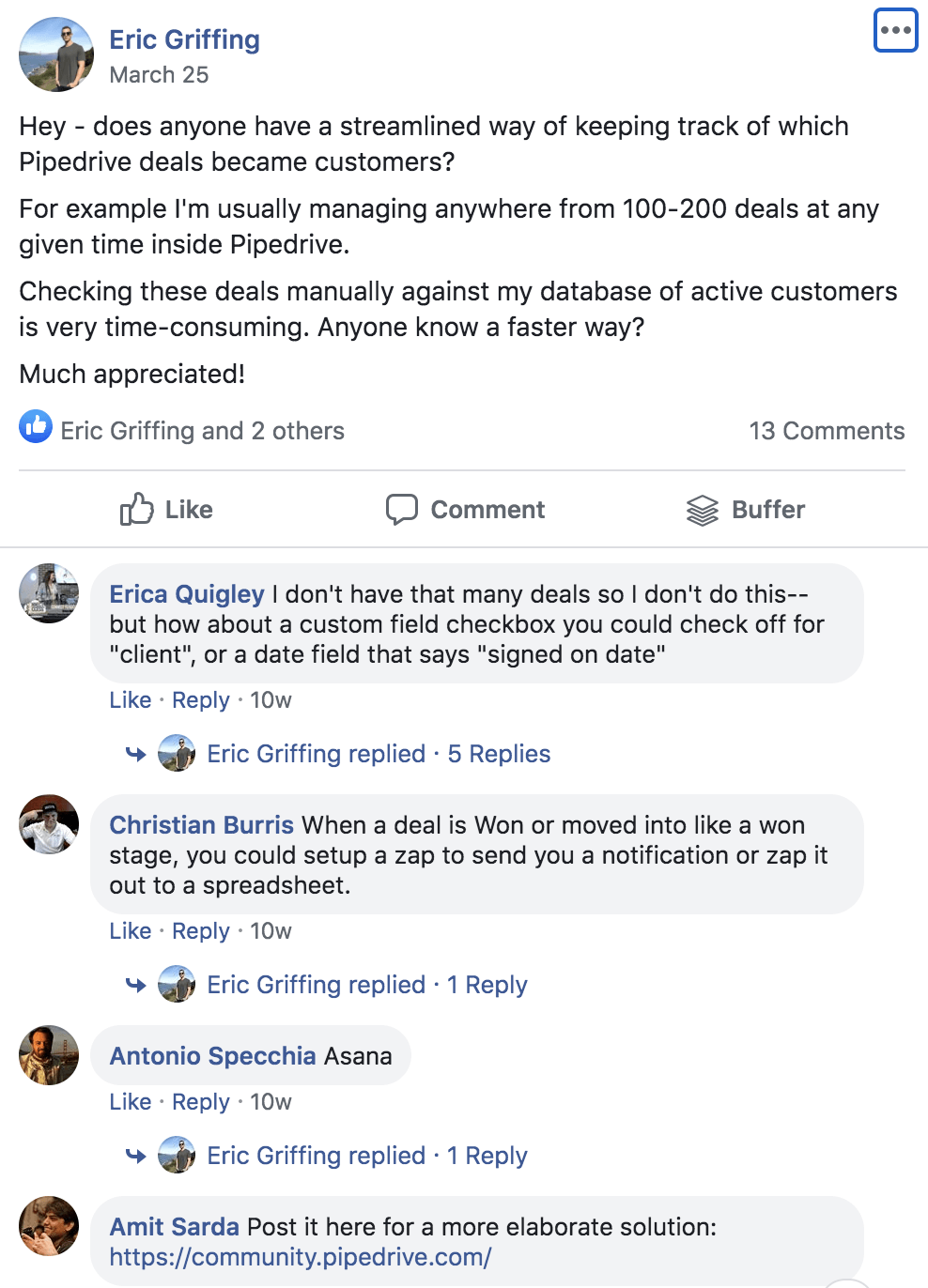
For example, Eric Griffing was looking for a way to better keep track of deals and posted in the Pipedrive User Group on Facebook seeking more help. Luckily, I was active in the group that week and was able to get ahead of it. Rather than having Eric do more work, we were able to solve it upstream.
With some help from the fine folks of the Pipedrive user group, we created an automation from our Stripe to Pipedrive to automatically mark deals as won and save Eric hours a month.
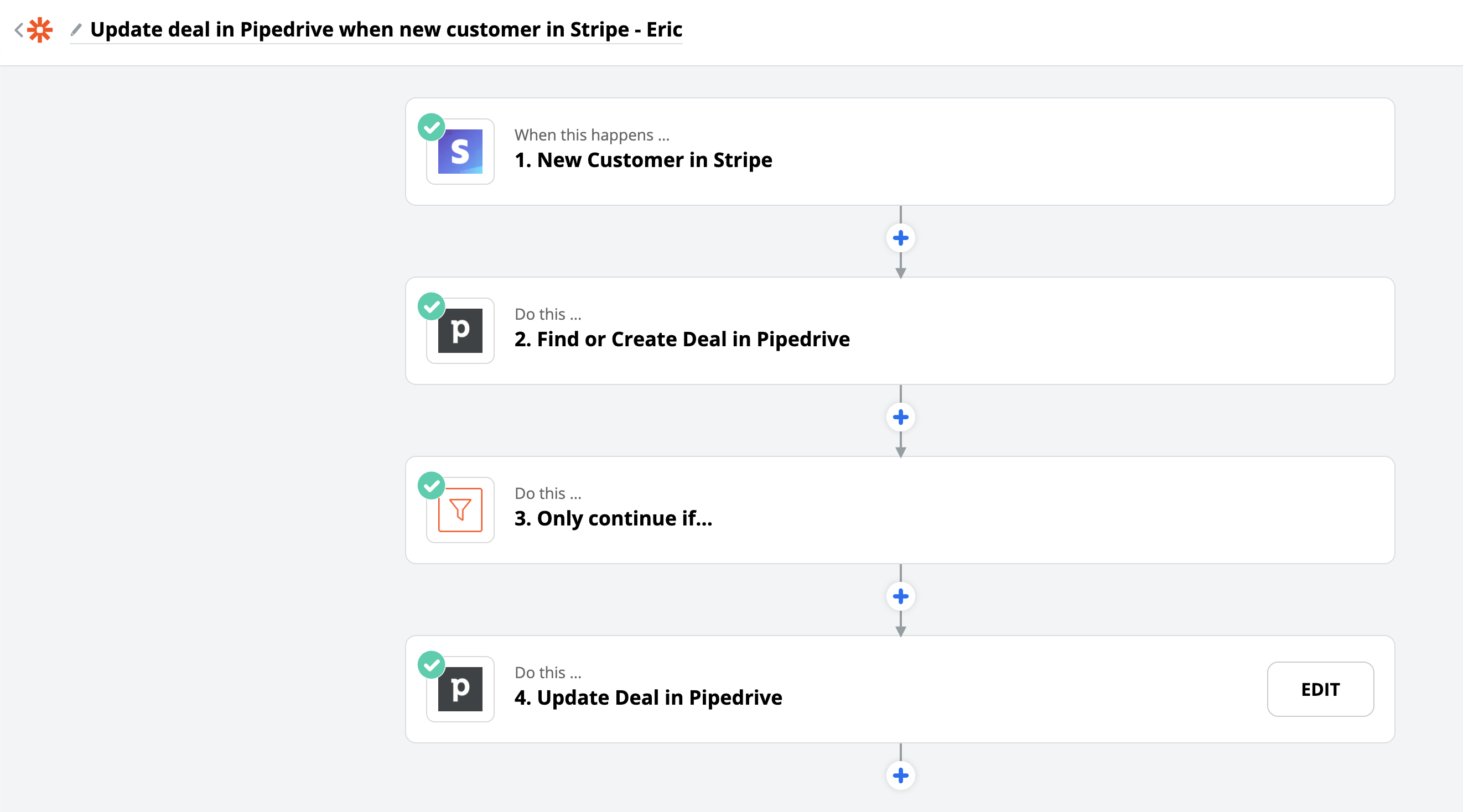
Here are some of my favorite zaps:
- Demos from Drift → Pipedrive (This was a bit tricker to set up since we needed to choose “closed conversations” in drift and filter by anonymous user IDs to get it to work, but after some chatting with Drift/Pipedrive/Zapier, we were able to figure this out.)
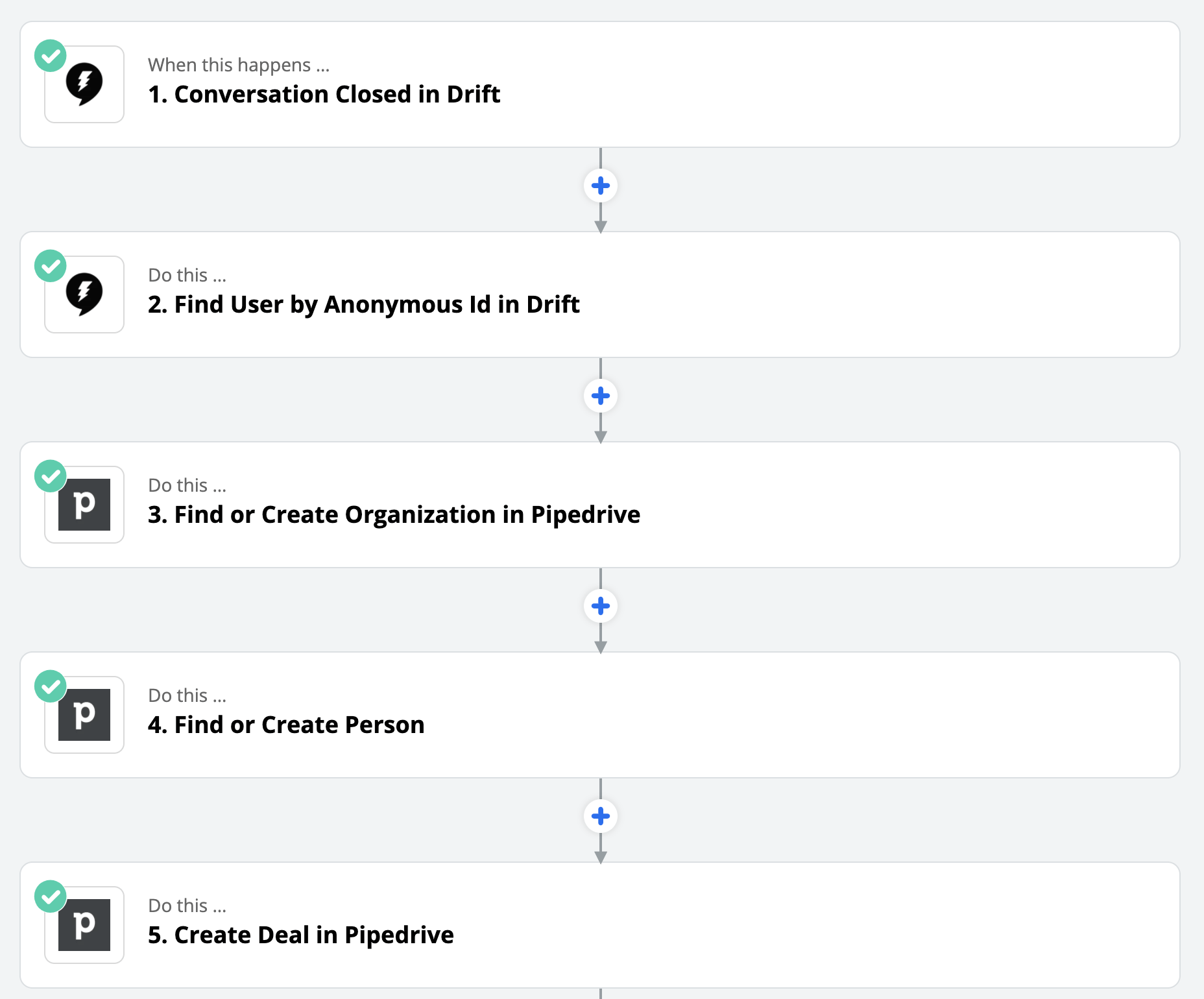
- Demos from Calendly → Pipedrive
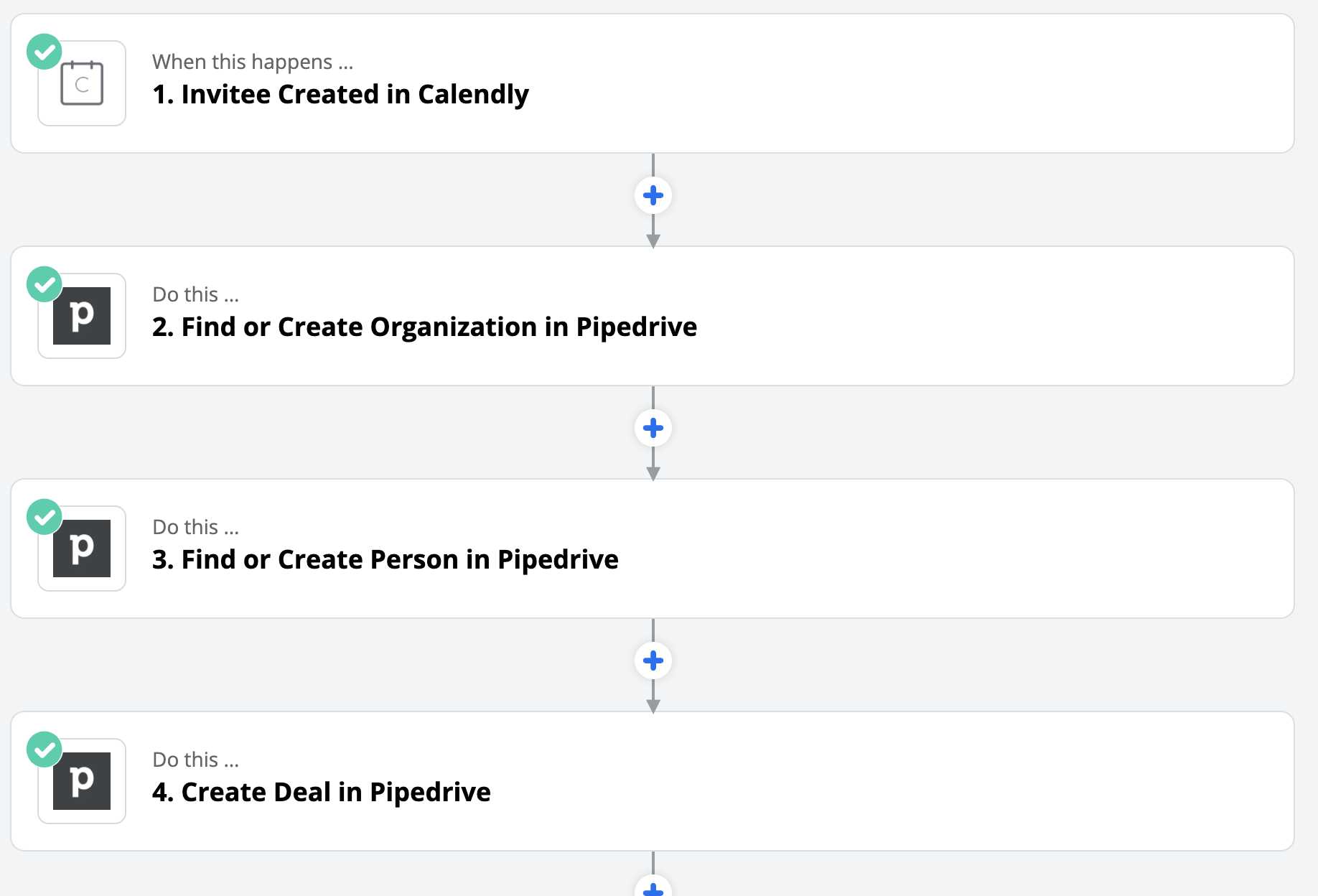
- Demos from Calendly → Slack (This enables us to have full transparency on who is booking demos without having to ask the reps.)
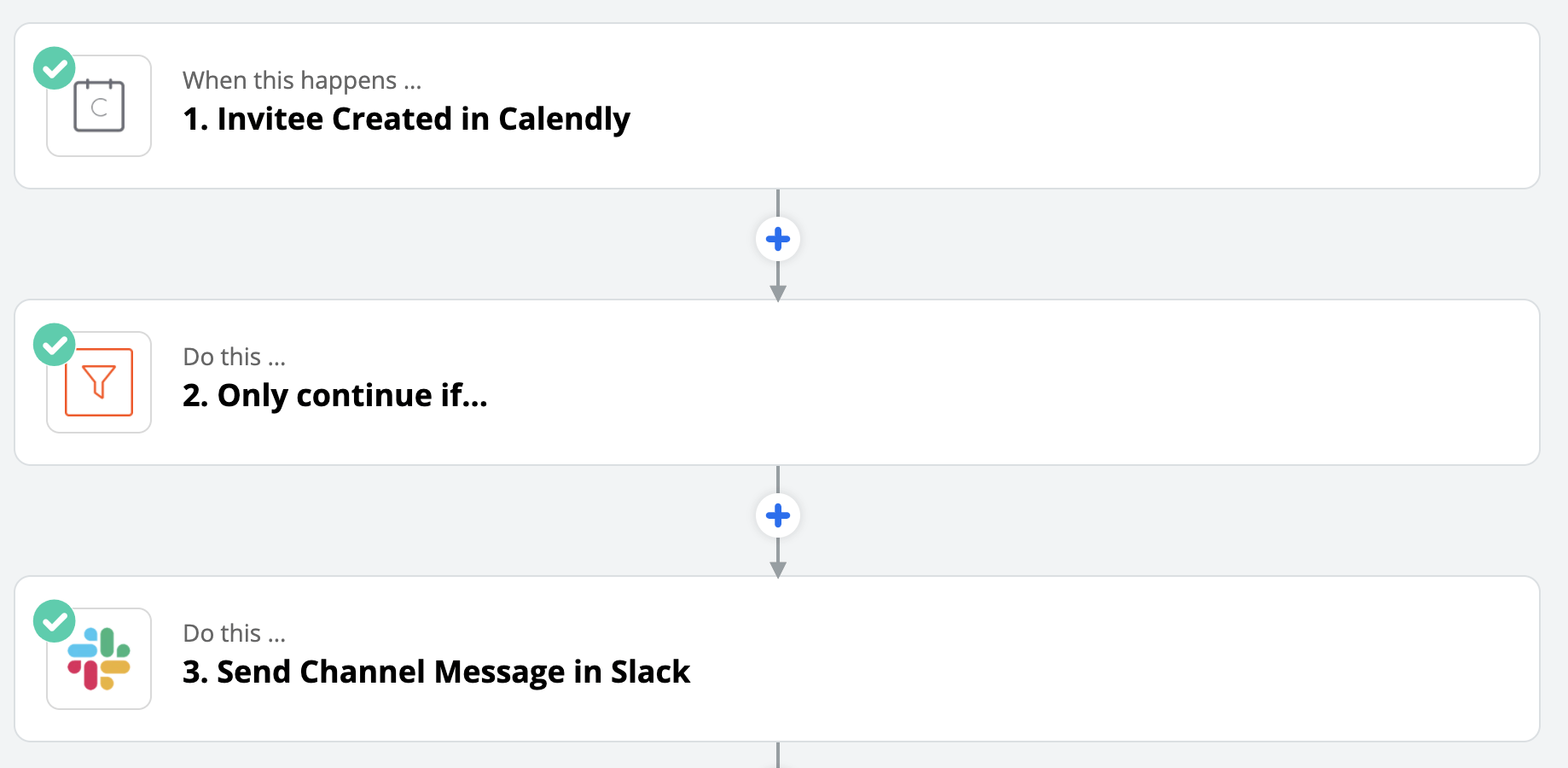
- Brightback watch list → Mailshake campaign (If someone goes to cancel or visits our cancel page, they get added to a watchlist thanks to Brightback. Then, we take their email and add them to a Mailshake campaign so we can work on saving them.)
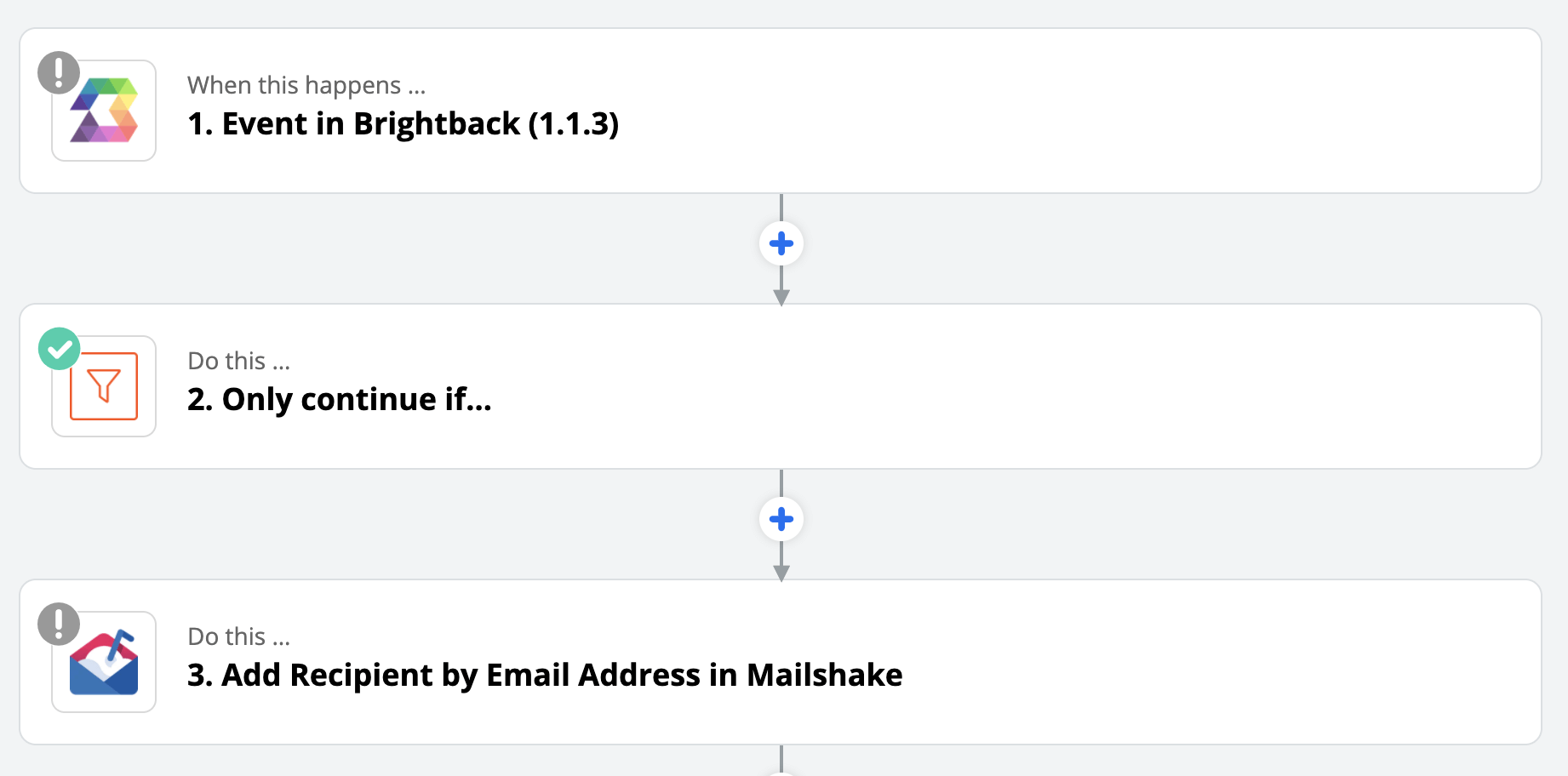
In addition to Zapier, we drink our own champagne here at Mailshake. We utilize our Mailshake and Pipedrive integration to automatically import “no shows” from Pipedrive into our Mailshake sequence, and we automatically add “ghosted” demos to a “PD nurture” sequence.
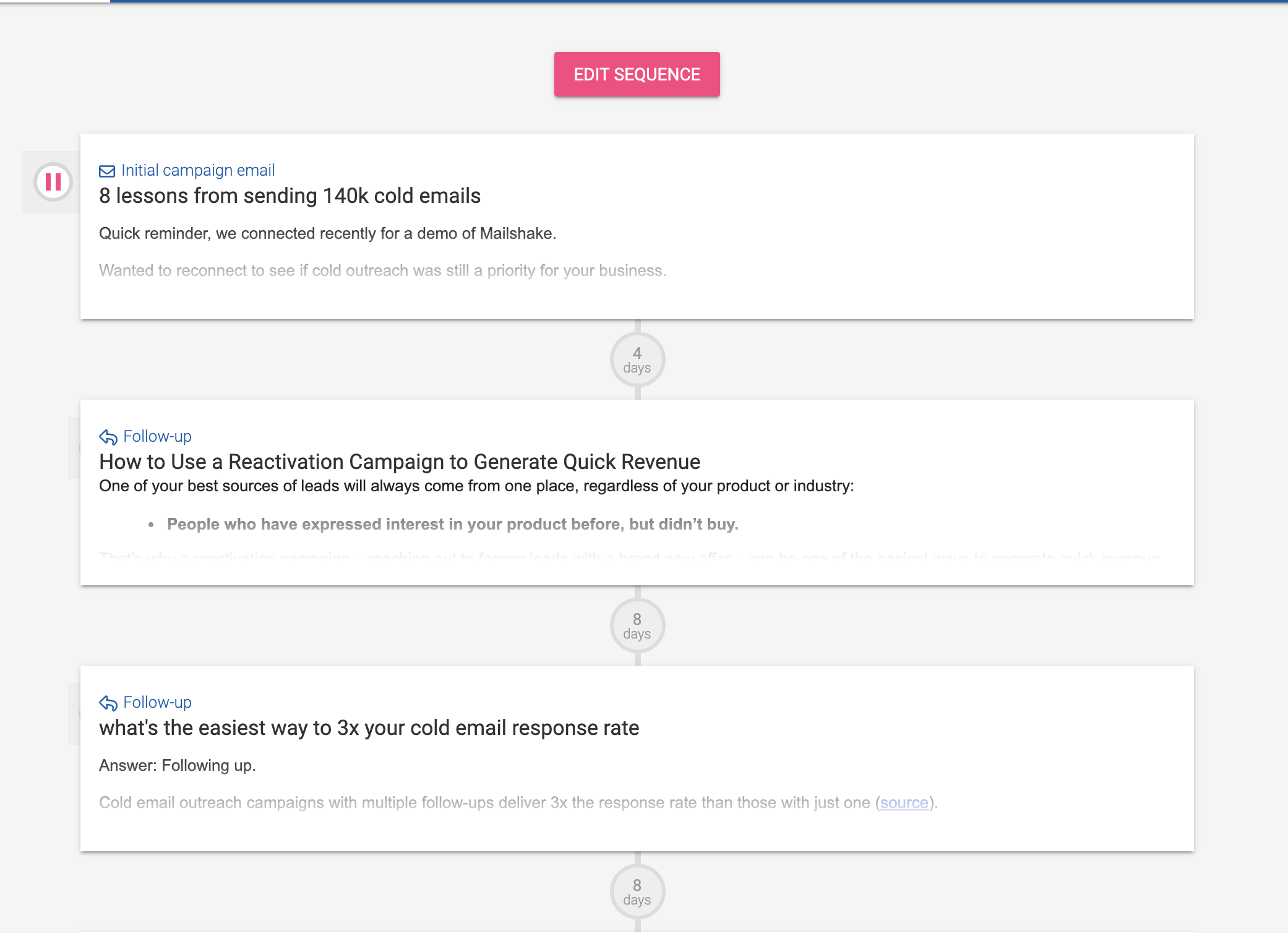
This helps save a ton of time and re-engages dozens of leads every month.
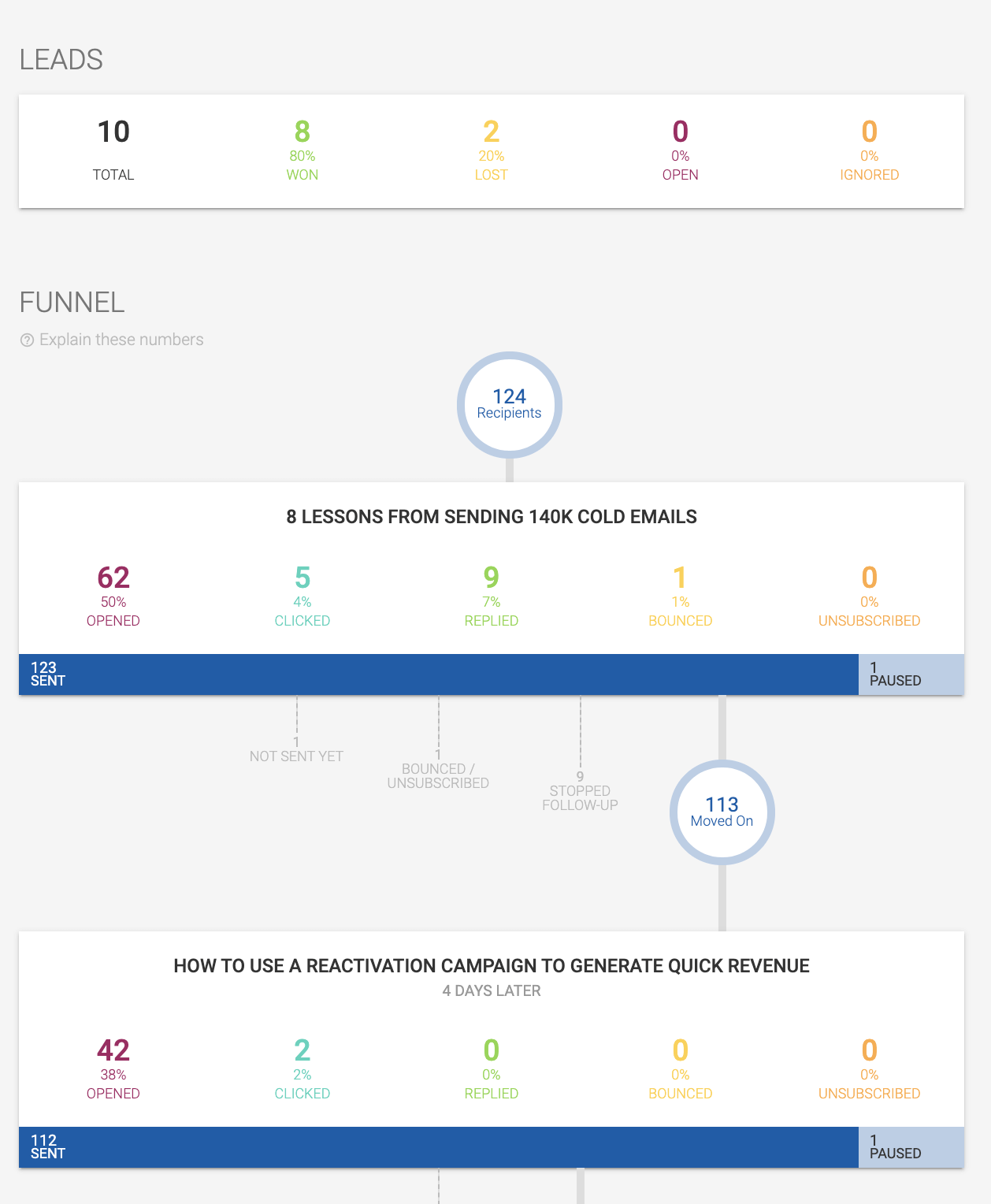
Now if you’re a Mailshake user there are hundreds of more zaps you can utilize to give you & your team super powers. You can find hundreds of pre built templates inside our extensions tab.
4. Celebrate Wins With the Entire Company
You’re virtual – there isn’t a gong you can hit, and there are no pats on the back, so we have to learn how to celebrate wins virtually.

Pipedrive made this easy for us with “Dealbot,” a Slack integration that sends a message to our #sales channel in Slack everytime a deal is won.
5. Invest More Time Into 1:1 Coaching
Coaching is one of the toughest things for new sales managers to learn. In addition – based on what I’ve researched – one of the top reasons great sales people leave your company is that they aren’t coached properly or coached at all.
I’ve spent a ton of time researching how to coach, what makes a good coach, and how to empower my reps to do their best work possible.
What I learned is that a great coach teaches reps how to coach themselves. The best sales reps are always in self-analysis mode and looking to improve.
To coach virtually: you can listen in on Zoom meetings, and you can schedule call reviews where you both listen back to a call. Both have their time and place.
When coaching, you can ask them, “What do you want to work on?”
Maybe it’s discovery, maybe it’s the closing or getting to next steps, maybe it’s a particular part of the demo process. After listening in on the call, you might feel inclined to give immediate feedback, but don’t. Encourage your reps to self reflect and coach themselves first. Ask them questions such as:
- How do you think that call went?
- What went well?
- What could have been better?
As a coach, you should also be getting coached and coaching yourself. Richardson has a free eBook on sales coaching. You can also hire professional sales trainers such as Morgan from JBarrows sales training, Josh Braun or Sandler Training.
6. Set Up Time & a Process for Product Training
When I started with Mailshake 2 years ago, we were a completely different product. We’ve since released our sales engagement product and made significant improvements across the board.
In the beginning, we weren’t great at articulating these changes and upgrades to the #sales team, but as we evolved, so did our processes. With a new product manager on board, we now host regular product trainings, and our sales team is the first to try new beta features such as Mailshake 2.0.
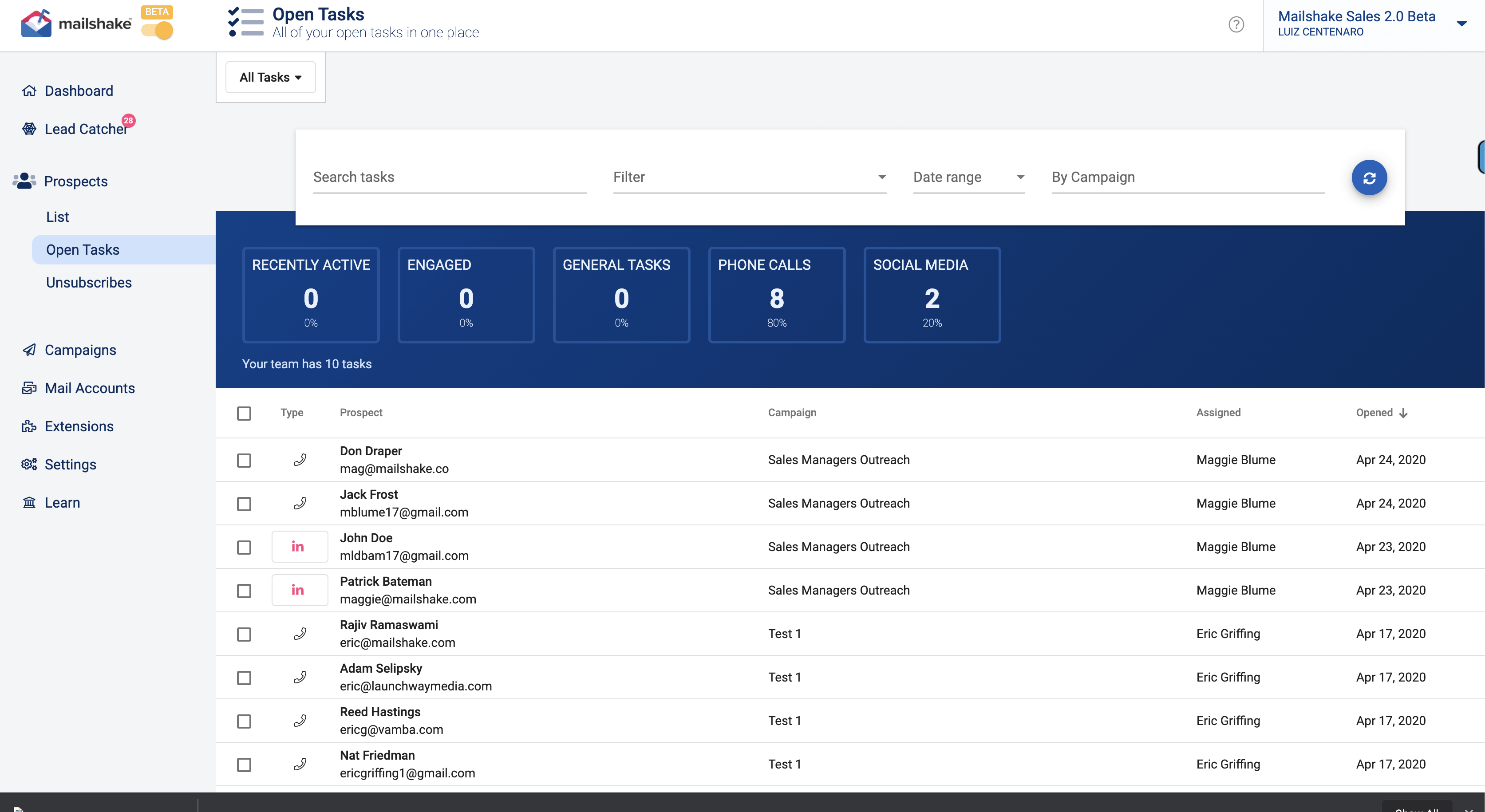
7. Focus on Learning & Development
You don’t need to be fancy to invest in learning and development. There are so many free sales conferences, remote working tips, podcasts, and blogs to learn from.
Here are some of my favorite sales books:
- Never Split The Difference
- The Sales Acceleration Formula
- Predictable Revenue
- ABM is B2B
- SaaS Sales Blueprints
Favorite sales blogs:
- Sales Hacker
- SalesGravy
- OpenView Sales Blog
- Predictable Revenue Blog
- Gong’s Revenue Intelligence Blog
- Mailshake Sales Blog
Favorite sales leaders to follow on LinkedIn:
Favorite sales podcasts:
- Surf & Sales Podcast
- The Art of Charm
- Sell or Die Podcast
- Advanced Selling Podcast
- Women in Sales Podcast
There you have it, 7 tips on managing a remote inbound sales team you can implement by next week. Do you have any other tips to share or is there a particular one here that resonated with you? Let me know in the comments or send me a note on LinkedIn.

